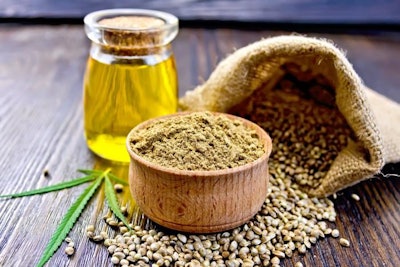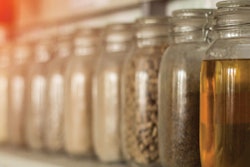
Despite promise, early research raises questions about the safety of using hemp in animal feed
The 2018 farm bill, with its promise of expanding industrial hemp production, raised hope that federal regulators might lift the current prohibition against hemp in animal feed. A few years later, that same farm bill has identified new potential barriers.
Part of the farm bill directed the U.S Department of Agriculture (USDA) to fund additional research on the use of hemp, and that research is underway at Kansas State University, where a team of researchers is working to fill gaps in the U.S. Food and Drug Administration’s (FDA) data on the use of hemp in animal feed.
While there are certainly promising nutritional and environmental benefits to the use of hemp, early trials have also raised some potential questions about its safety if fed to animals raised for human consumption, according to Michael Kleinhenz, an assistant professor of beef production medicine at Kansas State University.
One of the primary questions about hemp that went unanswered for years, Kleinhenz said, is whether the plant’s active chemical compounds, called cannabinoids, accumulate and persist in living tissue if consumed. In their initial study, Kleinhenz said, the K-State team went for the extreme, worst-case scenario: They fed hemp flowers, the same product from which CBD is derived, to cattle.
That initial trial proved what the researchers feared — multiple cannabiniods, including but not limited to CBD, could be detected in the animals’ plasma within three hours of feeding. Several of the chemicals persisted in the plasma for days, despite being fed at relatively low concentrations.
“It also depends on the variety and what it’s being grown for,” Kleinhenz said. “But all of the plants, even the ones for fiber production, have cannabinoids in them. So it would matter how much is being fed to an animal.”
This isn’t necessarily a deal breaker for the use of hemp in animal feed, but it presents some barriers: Before hemp achieves generally recognized as safe (GRAS) status, researchers will have to determine how long cannabinoids such as CBD persist in animal products that will be consumed by humans. They’ll also have to determine the concentration of cannabinoids that can be present in animal feed without accumulating in the animals themselves. Hemp products with very low concentrations of cannabinoids, such as hemp meal, may not present the same risk as products such as the flowers or plant fiber, Kleinhenz said.
“There is hope that there are other hemp components that have low cannabinoid concentration, that shouldn’t cause an issue,” he said.
He said K-State is in the middle of a 14-day feeding trial to learn more about how cannabindoids accumulate in animals exposed to hemp over a longer period of time. The trial is a precursor to a study of tissues from cattle raised on hemp and harvested as though for human consumption. That research should be completed within the first half of 2021.
From there, Kleinhenz expects the researchers will also move to a study of milk and dairy products, because, nutritionally, he still believes hemp makes sense as a potential feed ingredient, particularly for ruminants.
There is also potential for the use of hemp as a supplement, if the cannabinoids themselves prove capable of reducing inflammation and promoting greater animal productivity, Kleinhenz said, although there are questions about how such supplements would be regulated.















